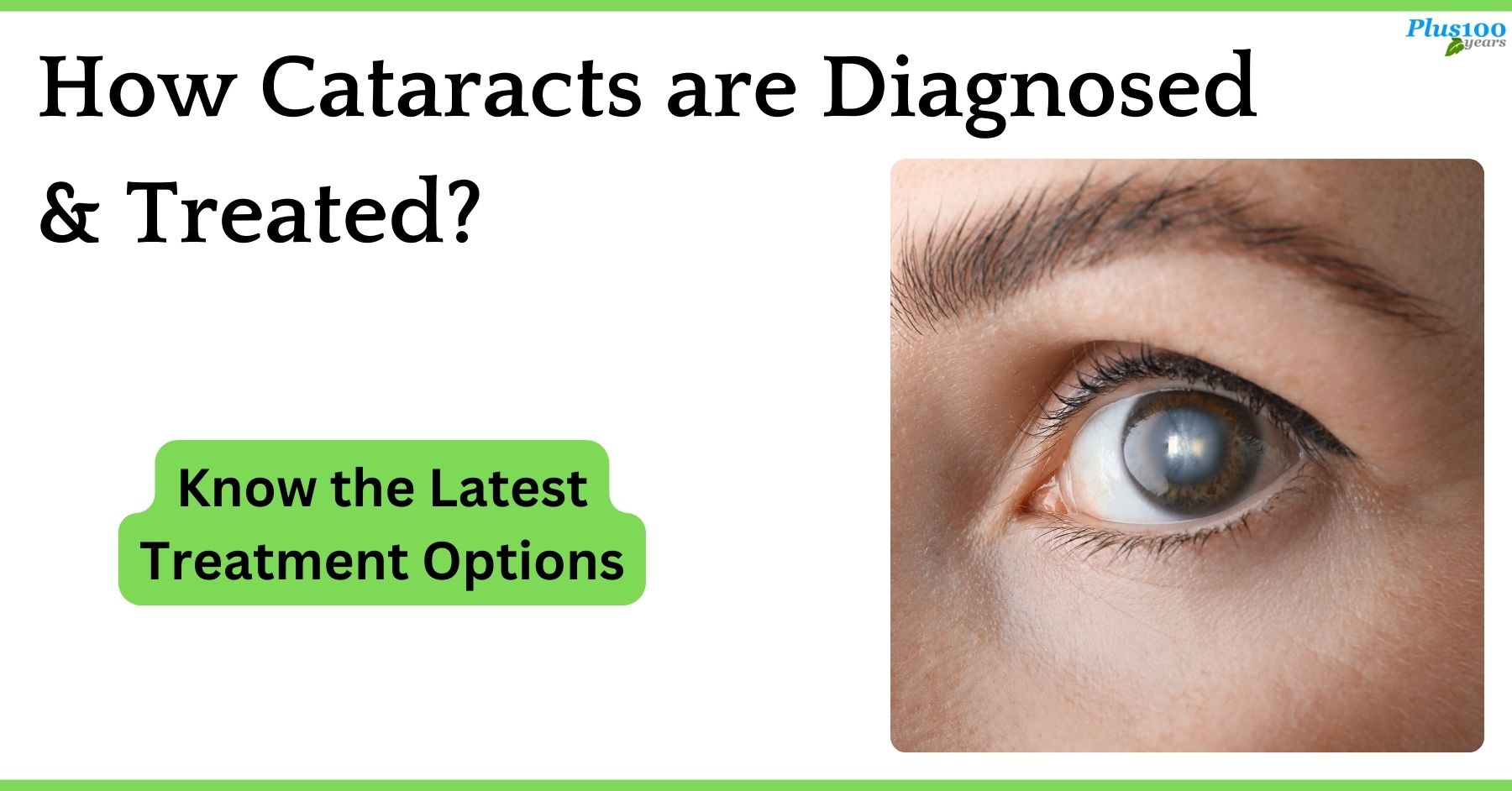
Author's Bio: Lizzie Howard (see full bio at ending of the article )
Millions of individuals worldwide suffer from cataracts, a common eye ailment that can result in blurred vision and, in the worst-case scenario, blindness if left untreated.
Maintaining excellent eye health requires an understanding of the diagnosis and treatment of cataracts.
This article offers crucial details on symptoms, diagnostic methods, non-surgical therapies, and surgery choices through which you will be able to diagnose and treat cataracts.
You can prevent cataracts and preserve your vision by learning everything there is to know about this issue.
Understanding Cataracts
Cataracts develop when the lens of your eye gets clouded, resulting in blurred or darkened vision.
Common symptoms of cataracts include difficulties seeing at night, light sensitivity, seeing 'halos' surrounding lights, and changing prescription glasses frequently.
Cataracts can harm one or both eyes and usually develop slowly. Risk factors include a family history of cataracts, advanced age, diabetes, smoking, and extended exposure to UV rays.
Timely diagnosis and therapy depend on early recognition of these symptoms and risk factors.
Knowing what cataracts are and how they impact your vision will help you take better care of your eyes and, if needed, will help you seek medical assistance timely.
Diagnostic Procedures
An extensive eye examination by an optometrist or ophthalmologist is the first step in diagnosing cataracts.
To gauge how well you see at different distances, they will first administer a visual acuity test.
The doctor can inspect the front portion of your eye under magnification during a slit-lamp examination, giving them a close-up look at the lens.
Additionally, they might do a retinal examination, which entails dilating your pupils with eye drops so they can see the back of your eye.
Further examinations, like a contrast sensitivity test or glare test, can be used to determine how cataracts impact your vision in various scenarios.
These diagnostic techniques offer a thorough picture of the condition of your eyes and the degree of cataract development.
Non-Surgical Treatment Options
Non-surgical cataract treatments can help control symptoms and enhance vision in the early stages of the condition.
Depending on your needs, your doctor may suggest prescription glasses or contact lenses.
Magnifying lenses can help with reading and other close-up jobs, while anti-glare coatings on lenses can lessen sensitivity to bright lights.
Adjusting one's lifestyle to include things like wearing sunglasses to block UV rays and improving the lighting in the house can also have an impact.
While eye drops and drugs don't usually cure cataracts, they can temporarily alleviate symptoms.
These non-surgical methods can help you preserve your quality of life, provided you don't want surgery.
Surgical Treatment Options
For advanced situations, cataract surgery is the most effective course of action. The most popular kind is called phacoemulsification, in which the clouded lens is broken up with an ultrasound machine, removed, and replaced with an artificial intraocular lens (IOL).
Before placing the IOL, a different technique called extracapsular extraction includes removing the clouded lens in its entirety.
A comprehensive eye exam and a discussion of your medical history with a qualified cataract surgeon is part of the surgical preparation process.
Using recommended eye drops to lessen inflammation and prevent infection, along with going to follow-up sessions to track recovery, are all part of post-operative care.
The majority of the time, cataract surgery is safe and greatly enhances vision.
Advances in Cataract Surgery
Cataract surgery has become more accurate and successful because of advancements in the field.
Femtosecond lasers are used in laser-assisted cataract surgery to create incisions and fragment the clouded lens, improving precision and shortening recuperation time.
Today's intraocular lenses (IOLs) come with alternatives, including toric lenses that treat astigmatism and multifocal lenses that correct vision at various distances.
Improvements in vision and a better quality of life after surgery are made possible by these developments.
Future advancements in cataract therapy are anticipated to include better lens materials and procedures, which could lead to even better outcomes and quicker recoveries. These developments are the result of ongoing research.
Conclusion
To preserve strong vision and a high quality of life, cataracts must be diagnosed early and treated effectively.
Timely medical consultations can be facilitated by identifying symptoms and comprehending risk variables.
A thorough evaluation of your eye health is provided via diagnostic procedures, which help you make the best treatment decisions.
Although non-surgical methods can effectively treat early-stage cataracts, surgery provides a permanent cure with notable enhancements in vision.
You may make sure that cataracts don't interfere with your everyday activities or general well-being by being proactive and knowledgeable about eye health.
Author's Bio: Lizzie Howard is a Colorado native who after graduating from the University of Colorado spends her time as a freelance writer. When Lizzie isn’t writing, she enjoys going on hikes, baking for her friends and family, and spending time with her beloved yellow lab, Sparky.
Add new comment